Thermal Energy Network (TEN) Symposium a Big Success!
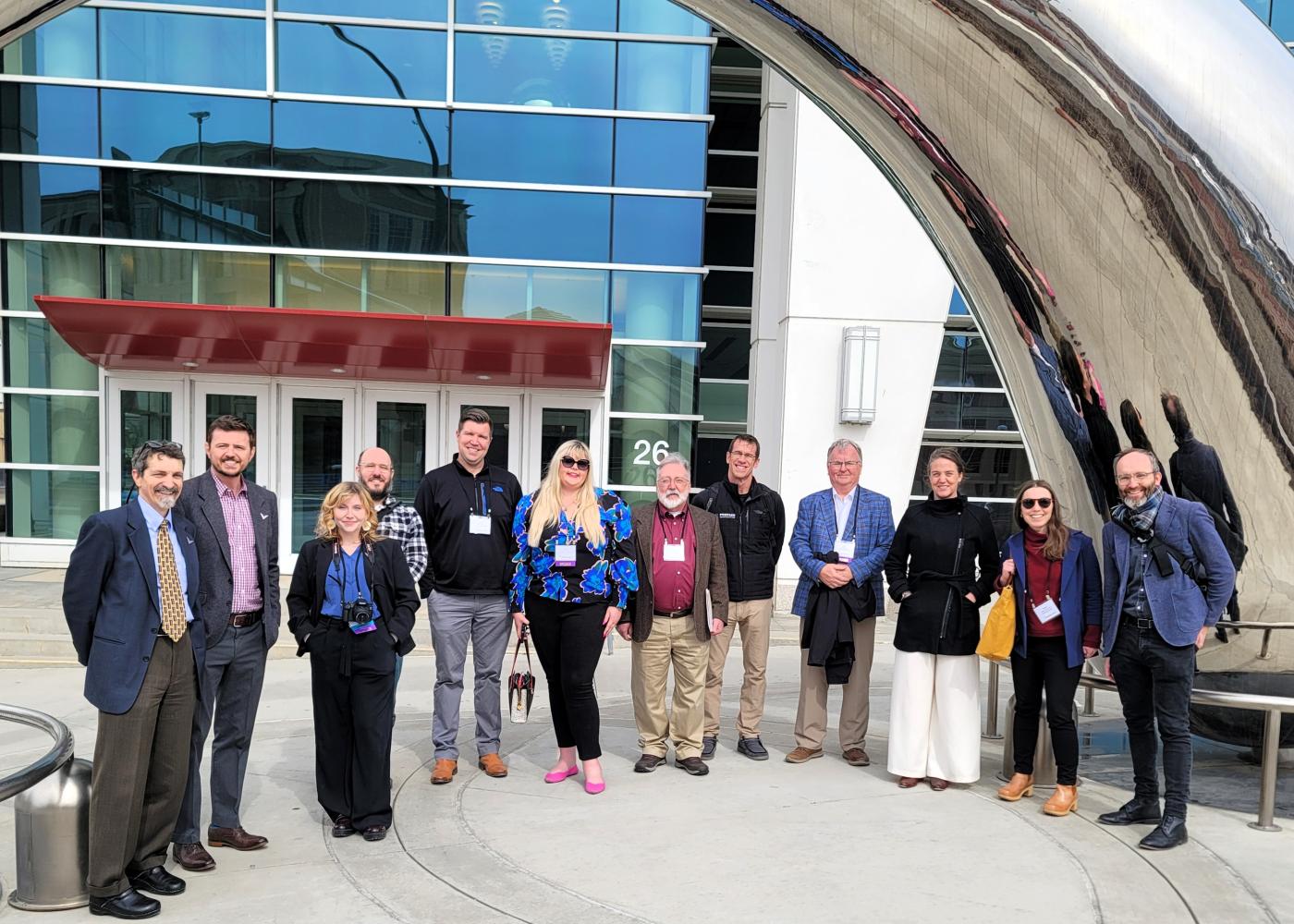
Rochester, MN has long been known as the home to the Mayo Clinic, and the Destination Medical Center (DMC) that has earned itself a reputation that warrants respect and is the Holy Grail of medical facilities worldwide. Because of this, the people of Rochester have embraced the spirit of putting themselves at the forefront of implementing technologies and systems that will set a precedent for people, communities, and organizations everywhere.
Rochester's architectural beauty also shines through its diverse array of buildings. Historic landmarks like the Plummer Building with its Chateau design to modern marvels like the Mayo Civic Center, which hosted a very special event this year.
What is it that’s causing so much commotion in the City of Rochester?
The answer is simple; Thermal Energy Networks (TENs).
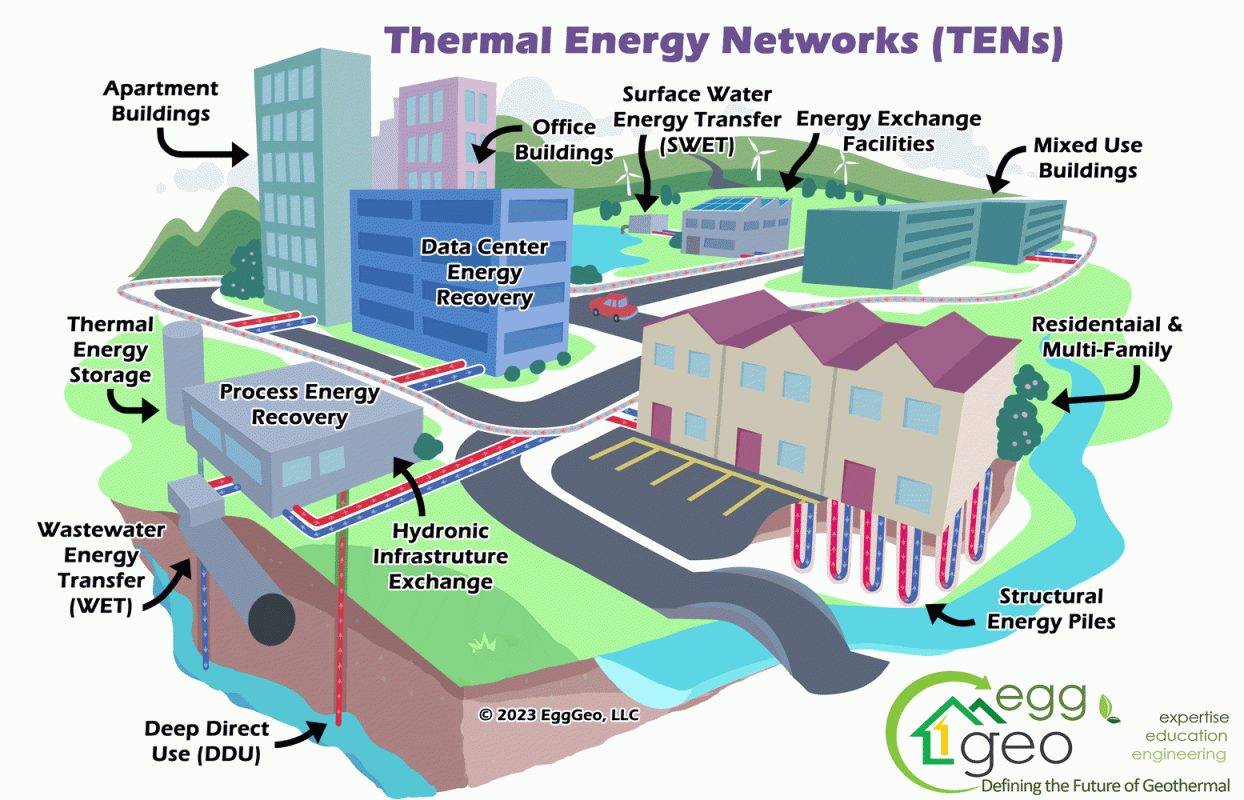
In a nutshell, Thermal Energy Networks, or TENs, are utility-scale thermal energy infrastructure projects connecting multiple buildings into a shared network with thermal energy sources such as geothermal boreholes, surface water, and wastewater. In many ways, it’s just as straightforward as it sounds and the results are clear; TENs will make a massive impact on decarbonizing Rochester, offer more reliable and efficient energy exchange to the buildings in the network, and make Rochester eligible for the financial benefits and subsidies of the Inflation Reduction Act.
Rochester is a place that experiences all four seasons; therefore, it can experience frigid days as well as hot days. Heat pump efficiency declines as the source temperature outside drops or increases dramatically during summer and winter seasons. The more extreme the temperature, the more an air source heat pump product will struggle against those hot and cold spells to deliver heating and cooling. By struggle, we are talking about remarkable spikes in energy consumption.
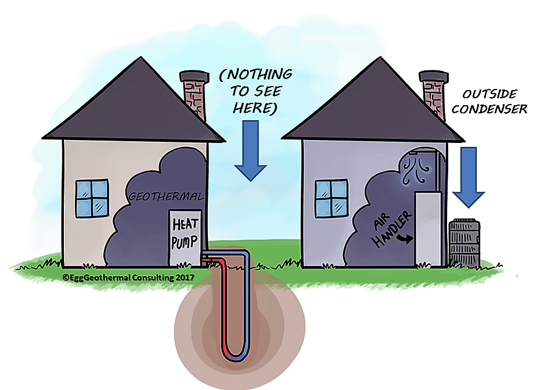
This is not true with properly engineered geothermal heat pump systems. Individual geothermal heat pump systems for buildings are remarkably efficient. Even better, When those heat pumps are installed in a TEN configuration, They can share energy with heat pumps operating in different modes. This is called load diversification and is often described as sharing of thermal energy. The concept is that heat pumps in the cooling mode reject heat that can be used by heat pumps in the heating mode. When you think of ice rinks, swimming pools, southern exposures, and northern exposures, it's easy to understand how it is that we can decarbonize an entire city just by linking the buildings together with a thermal energy network.
The first cost of geothermal boreholes, exchangers and other variations can be high. However, when buildings are linked together with the thermal energy network utility, buildings can simply tap into the pipeline, eliminating the individual costs of drilling expensive geothermal boreholes. You can compare it to the cost of drilling your own water well, versus tying into the city water service. The cost of the geothermal exchanger is normalized as a utility, like drinking water, sewer, and natural gas. With a TEN, the consumer can hook up a geothermal heat pump in much the same way a furnace or boiler is connected to a natural gas service. Only, with a 10, the renewable fuel is the energy potential of moving water. Pure water is one of the best conductors of thermal energy available today. Like the Circulating water in a plumbing system, if there were to be a leak, water will not ignite.
There is much that we can learn from communities that are implementing Thermal Energy Networks, and that was what Geothermal Rising (GR), and the City of Rochester were thinking as they planned the Rochester Thermal Energy Network Symposium. The City Simply wanted to share with and learn from others throughout the country the lessons learned. The result was an impactful cross-section of people, organizations, and companies gathered to hold a Symposium around TENs, and it was a resounding success.
For three days, experts assembled at the Mayo Civic Center and attended presentations and panels, while networking and discussing where this technology will go next. Attendees included engineers, geologists, union representatives, energy companies, legislators, DOE representatives, National Labs, and architects.

Mike Richter, President, Brightcore Energy, NHL Stanley Cup Champion, US Hockey Hall of Fame, Olympic Medalist said this regarding the Symposium, “This is the first hopefully of many…” and spoke about the importance of events like these being crucial for the industry and its growth, citing that those who attended the Symposium were influential and motivated people who could push for more of what’s happening in Rochester. “There is an incredible amount of knowledge in this room. The onus is on us as an industry to continue to educate and distribute the virtues of geothermal generally and TENs specifically in every way possible!”, Mike added, confidently endorsing the event and hoping for another like it soon.
With so much happening, a room full of movers and shakers in the industry, and a City set to grow and lead the way for others to see, it’s obvious that Rochester wants to learn from, and share what they are learning with any communities wishing to take the same steps toward implementation of TENs. It was wonderful to see the Mayor of Rochester, Kim Norton embrace this technology in her remarks.
The topics discussed at the Symposium varied widely, offering something for everyone in attendance. It was widely agreed that the event educated every attendee in some new way, having heard presentations and panels including union representatives, government officials, architects, geologists, and engineers focused on geothermal technologies.
One of the highlights of the event was a tour to see the heat pump and Thermal Energy Network system under Rochester’s City Hall. Folks had the chance to get up close and personal with the technology being discussed. Leading the tours was Rochester’s Facilities Manager Scot Ramsey. He explained the geothermal heat pump system, its geothermal wells, and how it worked as he guided groups through the geothermal equipment room. He provided clear explanations in a way that anyone could understand.
While networking at the Symposium, I (Mimi Egg) had a chance to speak with many attendees and hear their thoughts on the event and its potential impact on the industry. Here are some of those with whom I had conversations:
Jonathan Hernandez, Director Of Business Development for Geothermal at Brightcore Energy had plenty to say on the topic, emphasizing how it has, “…brought about a scalability that is interesting to everyone.” It’s a fascinating take on the way that this Symposium could shift the discussion surrounding thermal energy networks in the industry. Hernandez stressed that one of the things he wanted most out of this event was to see what the industry was looking forward to, he added that, “…this is about finding opportunities more than being presented them.”
The industry is growing dramatically in a dynamic way; everyone is looking for the roadmap, and for what’s next, how to grow, how to prosper, where to turn next, and the TENs symposium sparked that “something” for the attendees.
Eric Bosworth, Manager, Clean Technologies, Eversource Energy shared valuable information on the first thermal energy network to be installed across property boundaries in the modern era of utility networks. Eric is the Geothermal project manager in Framingham. He experienced a difficult learning curve as Framingham, Massachusetts constructed the first utility owned thermal energy network, or “U-TEN”.
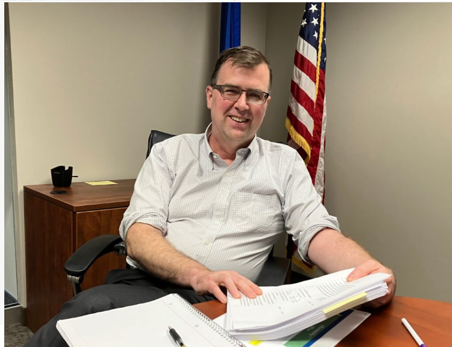
Pete Wyckoff, Assistant Commissioner of Commerce, State of Minnesota presented a bounty of information on the development of the Inflation Reduction Act (IRA). Pete served behind the scenes in the US Senate. He is described as a scientist that never gave up on passing the inflation reduction act. Minnesota is fortunate to have him working in the commerce division of energy resources.
Equipment Manufacturers served on two panels representing several major brands including ClimateMaster, Oilon, Ice-Air, WaterFurnace, Enertech, & Multiaqua. Attendees were treated to presentations on high temp heat pumps that can produce nearly 250° F4 retrofits and high temp buildings, dual source heat pumps that can be installed as air source and converted to Geothermal once the utility thermal energy network is installed, and multi-source heat pumps that use predictive technology to determine whether to exchange energy with the outside air or the thermal energy network.
CORECHEM, A heat transfer fluid manufacturer provided insightful intelligence on heat transfer of fluids. CORECHEM’s Mission is to protect our environmental resources with safe water-based heat transfer fluids in the event of any leakage, and provide services to ensure decades of trouble free heat transfer between our buildings and geothermal exchange resources. Heat transfer fluids are the lifeblood of thermal energy networks, and like any circulatory system, the fluid in thermal energy networks must be meticulously maintained and chemically balanced for trouble free equipment operation in cities and communities throughout the world.
John Ciovacco, President, Aztech Geothermal | Immediate Past President of NY-GEO co-hosted the event and provided a tremendous amount of organizational help, making the event flow well and provide concise and clear information to attendees. Aztech Geothermal is and New York based engineering and service company that has promoted geothermal technologies and has been involved in a multitude of thermal energy network utility systems throughout the northeast.
Heather Deese, Director of Policy and Regulatory Affairs, Dandelion Energy (a Google X spin out) shared Dandelion’s vertical integration concept. The company has installed thousands of geothermal heat pumps into various communities throughout their growing servicer area. They own the drill rigs, employ the people, design the systems, and have been a motivating factor in the national uptake of geothermal heat pump technologies worldwide
Mike Luster, Sr. Mechanical Systems Engineer, Mayo Clinic Spoke of their $5 billion plus expansion of the Mayo Clinic in downtown Rochester. His even-tempered explanation of Mayo's commitment to decarbonization was inspiring to all present. It is Mike's responsibility is to oversee the overall mechanical systems operation for the massive Mayo Clinic campuses. He is looking forward to utilizing geothermal technologies to decarbonize Mayo’s mechanical systems.
Michael Albertson, President, SHARC Energy Shared the exciting expansion of Wastewater Energy Transfer (WET) throughout the world. This is perhaps the most underutilized energy technology in the United states. Billions of kilowatt hours of energy are literally flushed and swept down the drain before we have a chance to recover and reject BTUs into that wastewater energy stream. Mike likes to say that we already have a thermal energy network installed under our streets; it's our sanitary sewer system.
W. Boyd Lee, VP Strategic Planning, CKenergy Electric Cooperative gave an impactful presentation and was able to clearly delineate how geothermal heat pumps reduce peak demand. Boyd illustrated how their energy cooperative can fund geothermal loops 100% and recover those funds within just a couple of years In peak electrical demand savings. His presentation provided decisive and conclusive evidence that implementation of geothermal technologies in any community will provide peak demand reduction to such a degree that the systems pay for themselves.
Brooke Carlson, MA, MPH, City Council President, Rochester, Minnesota shared her vision for the expansion of thermal energy networks throughout the city. Individuals such as Brooke are integral to moving this technology along in communities nationwide.
Patrick Seeb, Executive Director, Destination Medical Center Economic Development Agency Talked about the partnership that Mayo has with the city of Rochester through the Destination Medical Center Economic Development Agency. Rochester has a unique relationship with the Mayo Clinic through the advocacy of the destination Medical Center (DMC).
Senator Amy Klobuchar, United States Senator (MN) Dazzled attendees with her personal address to the Rochester Thermal Energy Networks Symposium attendees, citing many projects throughout Minnesota that have helped Minnesota to become a shining beacon of renewable energy efforts.
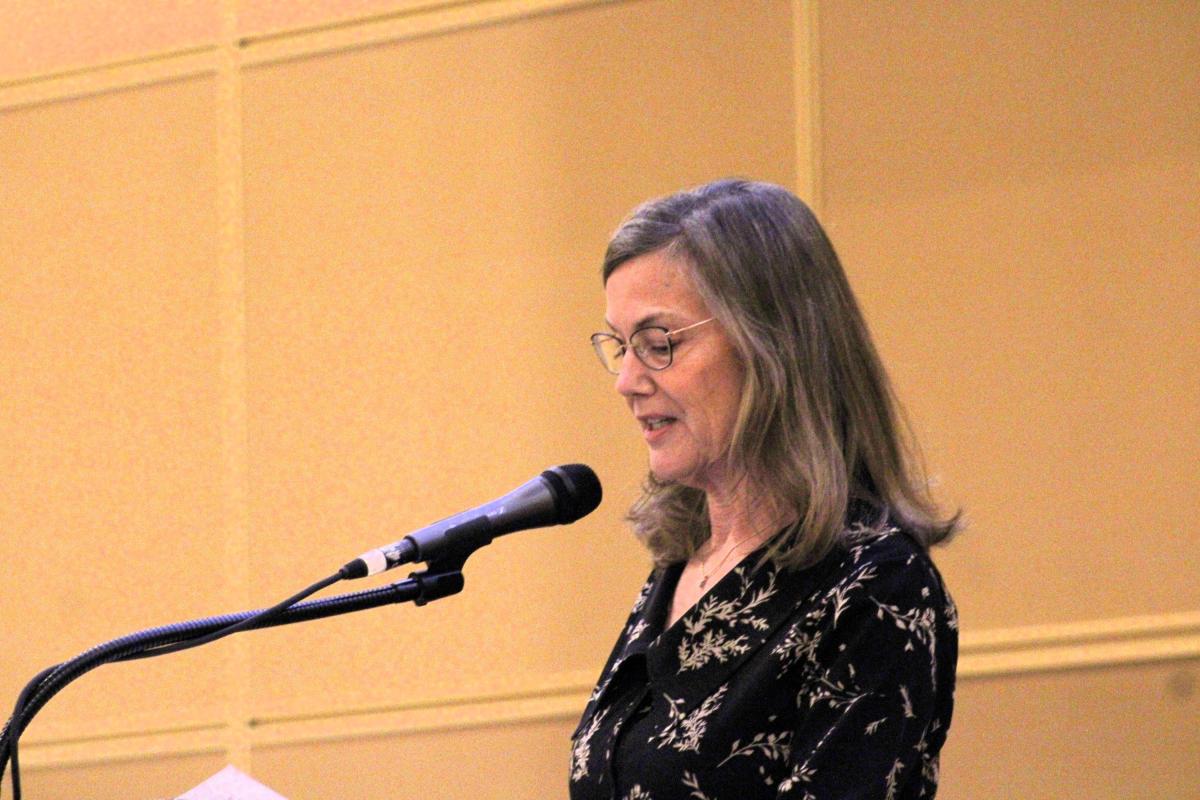
Mayor Kim Norton shared in a one-on-one interview that she hadn’t initially had much experience with Thermal Energy Networks prior to this project. Her introduction to geothermal systems came when her brother installed a geothermal heat pump in his home. That is a persuasive argument for how one person’s example can lead to such a major step toward decarbonization with reliable, efficient energy systems for all involved. Mayor Norton said that Thermal Energy Networks are, “…bringing an exciting new technology with a smaller footprint and better efficiency…” adding that she couldn’t be more pleased with the outcome.
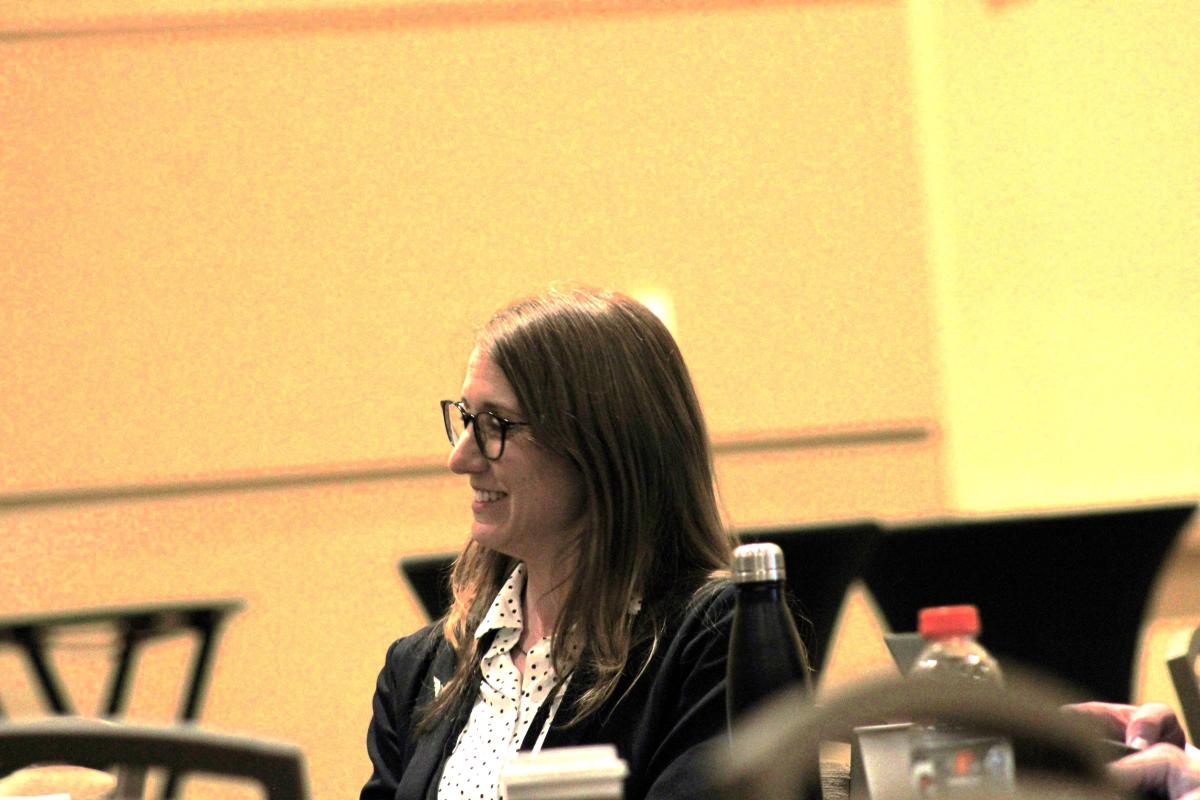
Lauren Boyd, incoming Director at the Geothermal Technologies Office (GTO) shared her gratitude witnessing the remarkable growth in the Thermal Energy Networks arena. She said that she will continue to work with the GTO and the DOE to foster expansion of these and all types of geothermal technologies throughout the US.
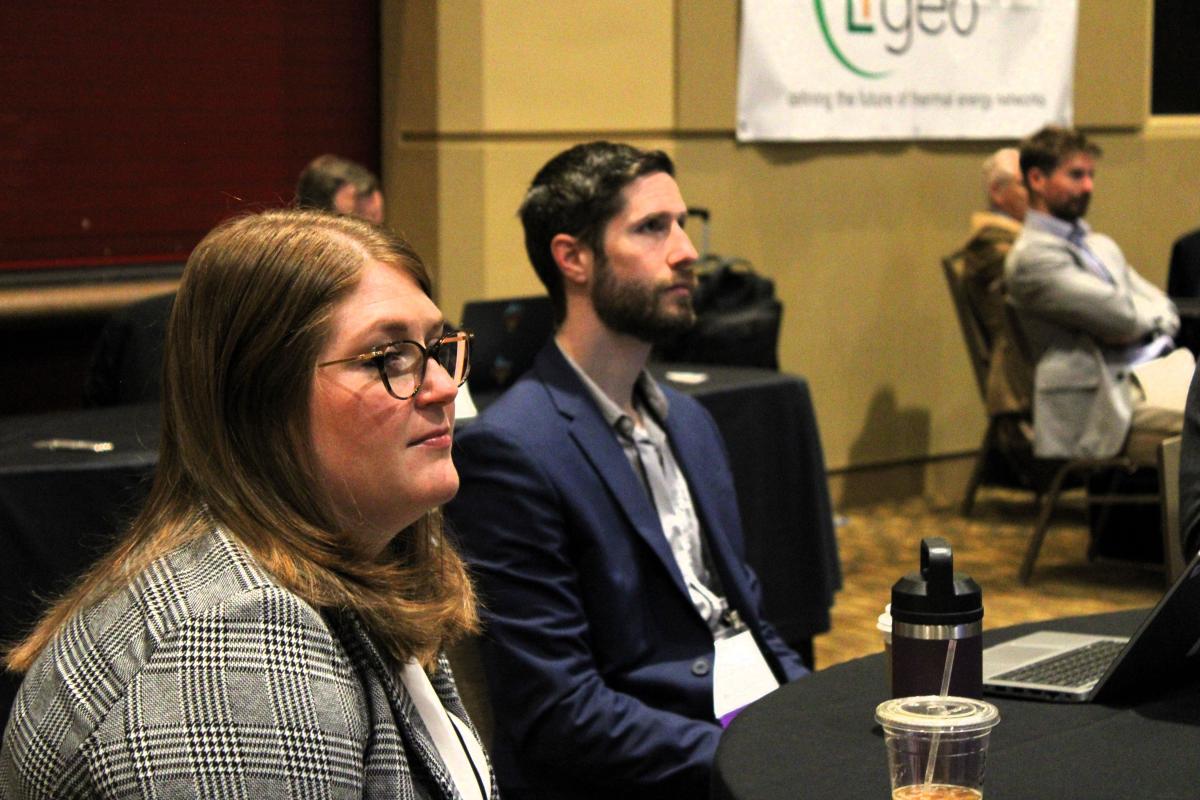
Faith Martinez Smith, Energy Policy & Regulatory Analyst at NREL shared the research she has been working on that will make it easier to access information of all kinds for implementation of geothermal heat pumps at the state and local levels. Stay tuned for program from NREL that will revolutionize our access to these programs!
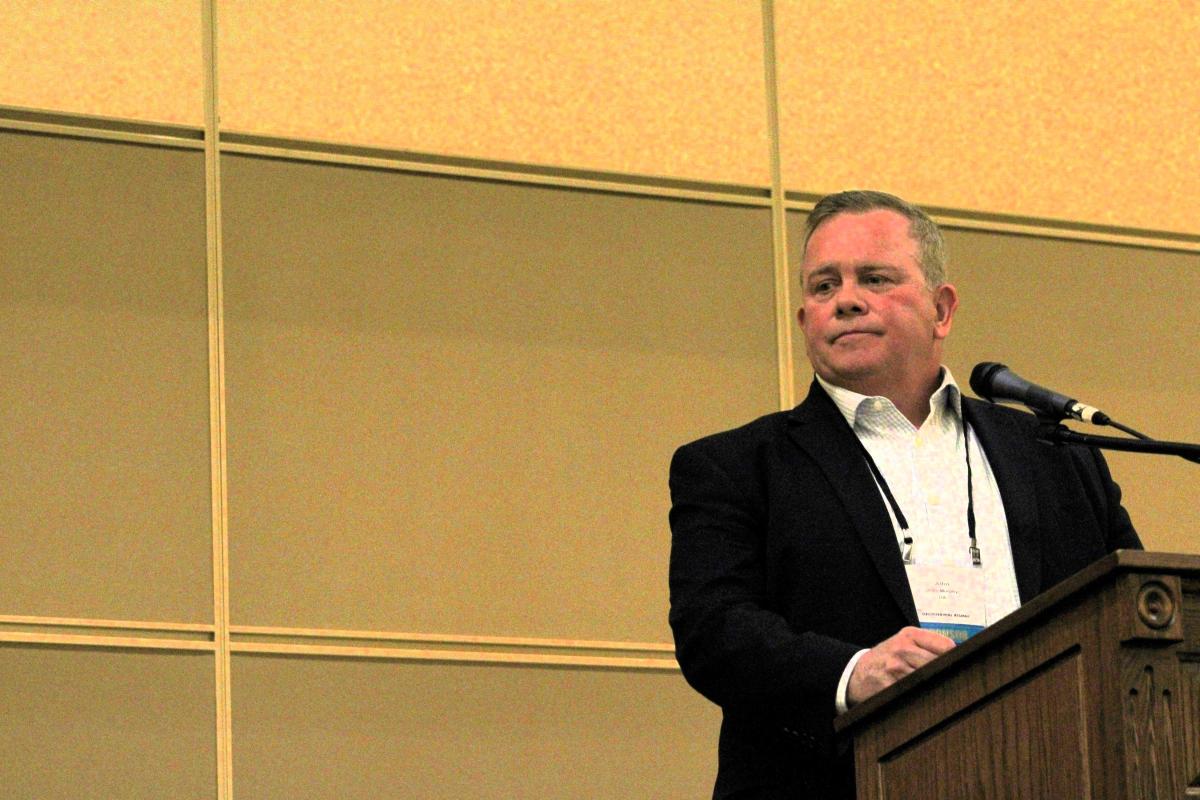
John Murphy, is the Business Representative for the United Association of Journeymen and Apprentices of the Plumbing and Pipe Fitting Industry of the United States and Canada, commonly known as the United Association (UA). The UA is a labor union which represents workers in the plumbing and pipefitting industries in the United States and Canada, which represents nearly 400,000 families in the North America. John shared some wonderful insights into our workforce. The UA has been the catalyst for moving these systems forward in North America. John made it clear that our nation’s workforce is ready to put in these massive piping projects underneath the streets of our communities and cities nationwide. The UA was the primary catalyst in the passage of the New York thermal energy networks and JOBS Act of 2022. It was signed into law in July of 2022 by Governor Hochul and required every publicly regulated utility to design and install several UTENs in their service area.
The Electric Power Board in Chattanooga TN sent three of their representatives, including the CEO, CFO, and their Strategic Planning Supervisor. After attending the symposium, Daniel Crawley, Strategic Planning Supervisor in charge of geothermal projects said, “…that Symposium was what we needed, and I don't say that lightly. We needed that to get connected with some of the people that are in your world.”
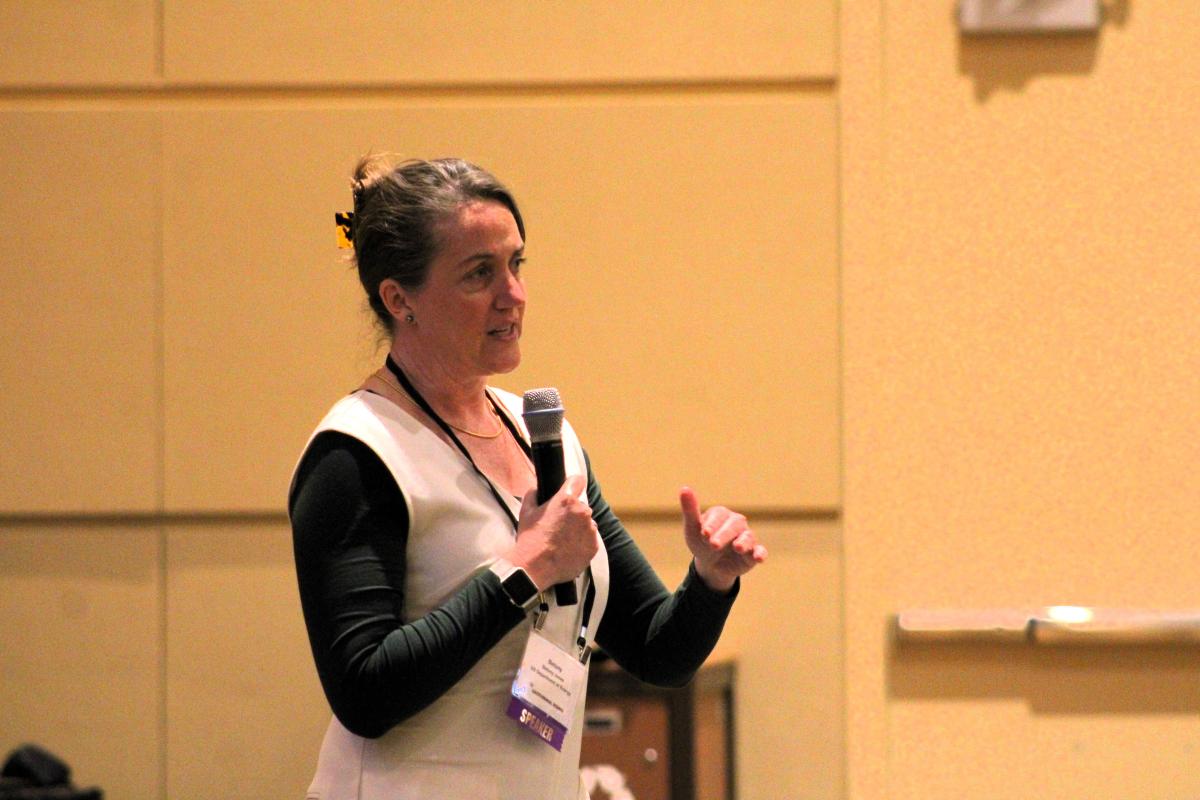
On the final day of the Symposium, we had the honor of hearing from Betony Jones, labor advisor to US Energy Secretary, Jennifer Granholm and Director of The Office of Energy Jobs at the Department of Energy. It was fascinating to be joined by someone with such a great perspective on the implementation of sustainable technology and particularly the work being done to decarbonize The United States built environment. When asked what she thought the Symposium has done for Rochester and communities nationwide, she said, “It brings together the pipe trades and other labor unions with businesses and utilities,” emphasizing the presence of those organizations and individuals representing unions and trades at the symposium. She called out the possibility of this being a great setting for organizations and policymakers who are trying to “figure out how to decarbonize.” Ironically, Betony arrived on the third day of the symposium, the day after the labor union representatives had to head out for other obligations. She even asked from the podium if any other representatives of the Energy Department were at the Symposium, and was told that she just missed Lauren Boyd, who was there the 1st and 2nd day but had to depart before Betony arrived.
The Thermal Energy Network Symposium certainly made a splash, showcasing Rochester and even earning a spot on the local TV news with interviews featuring Scot Ramsey, Manager of Facilities & Property, City of Rochester, and Bryant Jones of executive director of Geothermal Rising, the organizer of the event. The Symposium has set the foundation for continued Thermal Energy Network gatherings throughout the country in coming decades.
No one wants to be the first to go, everybody wants to be the second one. The truth is, the first ones are those we always remember, and Rochester took a leap of faith and has seen it begin to pay off already. It’s been an incredible ride, and the TENs Symposium was the perfect way to punctuate what has been years of researching, planning, and working toward what is being celebrated today.
Jay Egg is a geothermal consultant, and President of Egg Geo, LLC. He has co-authored two textbooks on geothermal HVAC systems published by McGraw-Hill Professional. He can be reached at jegg@egggeo.com
